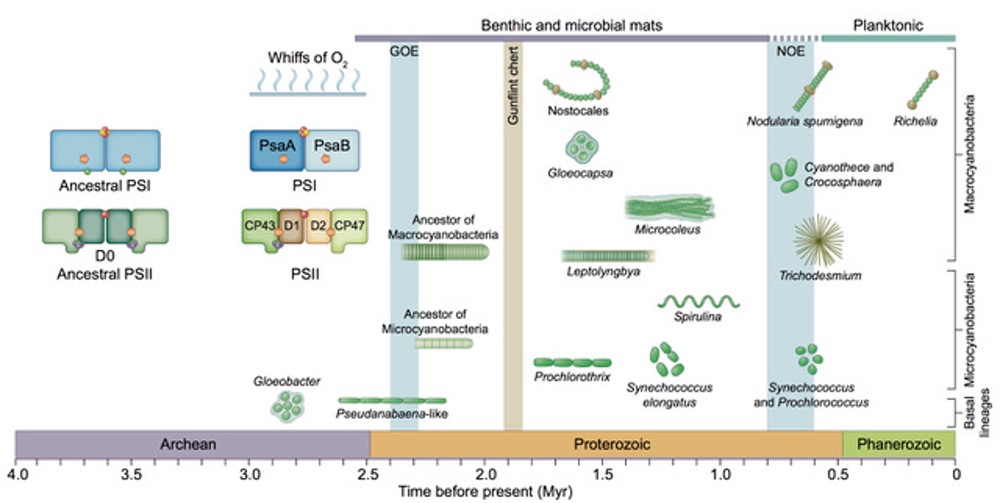
On the origin of oxygenic photosynthesis and cyanobacteria (New Phytol)
Photosynthesis occurs in several ways, only one of which releases oxygen as a product. As oxygen-breathing organisms, we are totally dependent on oxygenic photosynthesis, which is restricted to cyanobacteria and green plant plastids. In this review, Sánchez‐Baracaldo and Cardona examine how recent…
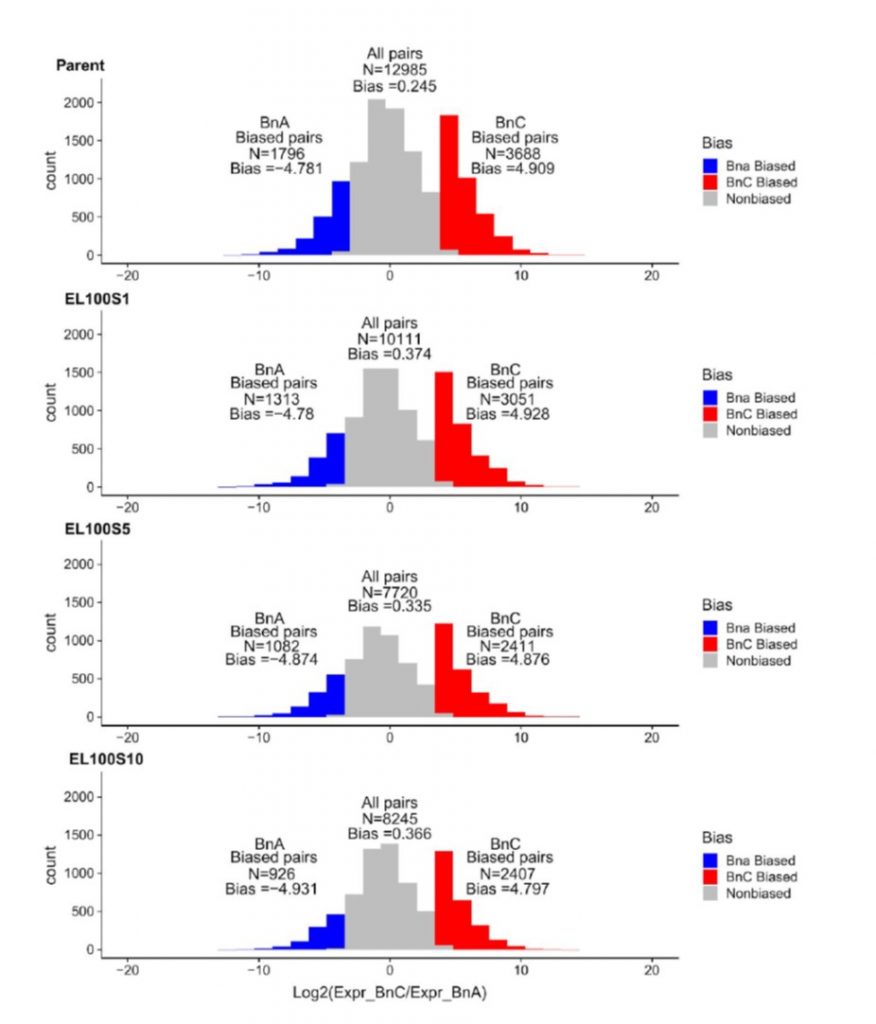
Replaying the evolutionary tape to investigate subgenome dominance in allopolyploid Brassica napus (bioRxiv)
Following interspecific hybridization, one of the two parental genomes (aka subgenomes) tends to become dominant (more highly retained and expressed). What determines which of the subgenomes will become dominant, or is it random? To explore this question, Bird et al. made several crosses between Brassica…

One thousand plant transcriptomes and the phylogenomics of green plants (Nature)
With a collaborative effort by multiple laboratories across the world, a database of transcriptomics data has been generated for 1124 species encompassing green plants, glaucophytes, and red algae. This extensive work referred to as onekp (one thousand plant transcriptomes) will aid in researchers to…

Comparing genes that govern flower development in Petunia and Arabidopsis: Evolution made a mess!
Morel et al. investigate AP1/SEP/AGL6 MADS-box transcription factor functions in Petunia. Plant Cell https://doi.org/10.1105/tpc.19.00162
By Michiel Vandenbussche
Background: The ABCE model is a simple genetic model that explains how the different floral organs in the flower (sepals, petals, stamens…
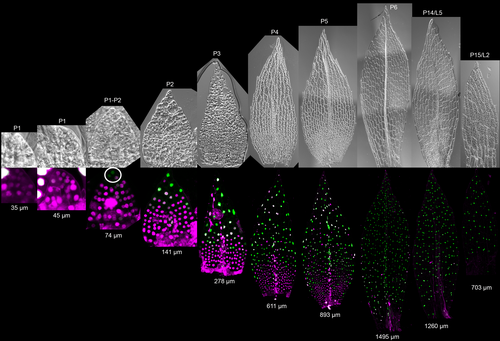
Minimal auxin sensing levels in vegetative moss stem cells revealed by a ratiometric reporter ($) (New Phytologist)
Auxin plays multiple developmental roles from embryogenesis to seed development. To understand the mechanism of auxin response in plants, researchers utilize the early-diverging land plant models, Physcomitrella patens and Marchantia polymorpha. In this paper, Thelander et al., have identified a…

Genome editing retraces the evolution of toxin resistance in the monarch butterfly ($) (Nature)
When a few species from several distantly related groups produce a similar but unusual trait, we usually assume that this trait is an example of convergent evolution; starting from different places but ending up at the same place. The ability to eat plants that produce cardiac glycosides, which are toxic…
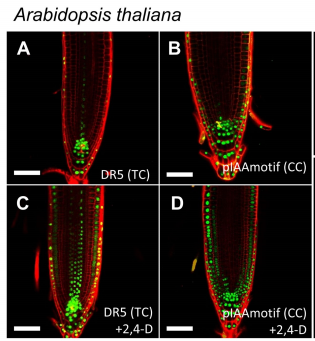
Deep conservation of cis-element variants regulating plant hormonal responses (Plant Cell)
Promoter regions upstream of transcription start sites contain DNA regulatory elements (RE) crucial for the transcriptional control of gene expression. However, REs are short degenerated sequences with low conservation during evolution. In this paper, Lieverman-Lazarovich et al. studied REs in core hormone…
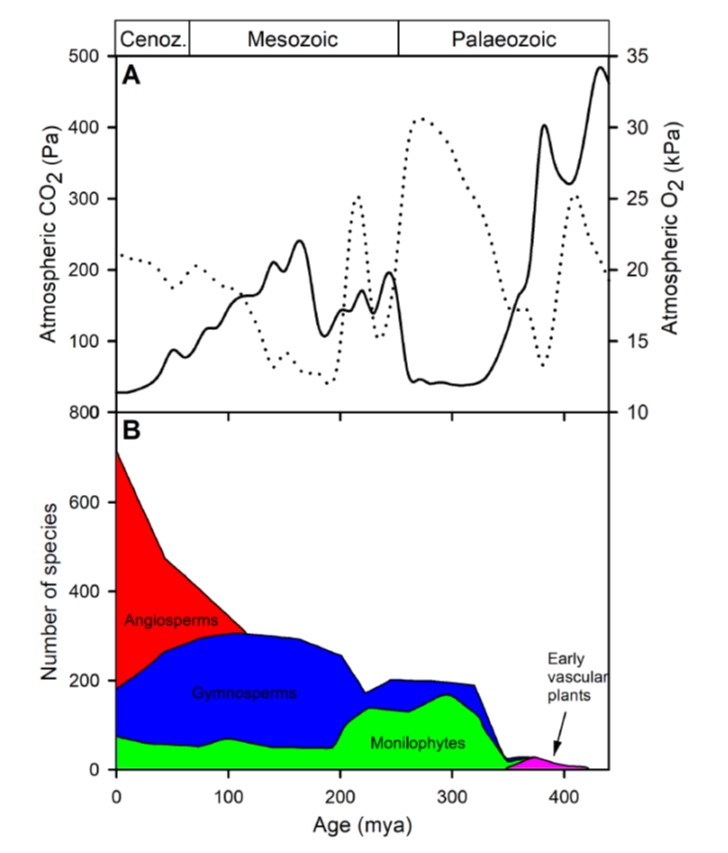
A novel hypothesis for the role of photosynthetic physiology in shaping macroevolutionary patterns (Plant Physiol)
In the 450 million(ish) years since plants acquired the ability to live on land, they have caused dramatic changes in the concentrations of atmospheric CO2 and O2 levels. As an example, due to tremendous increases in photosynthesis, CO2 levels dropped and O2 levels rose dramatically in the late Paleozoic…
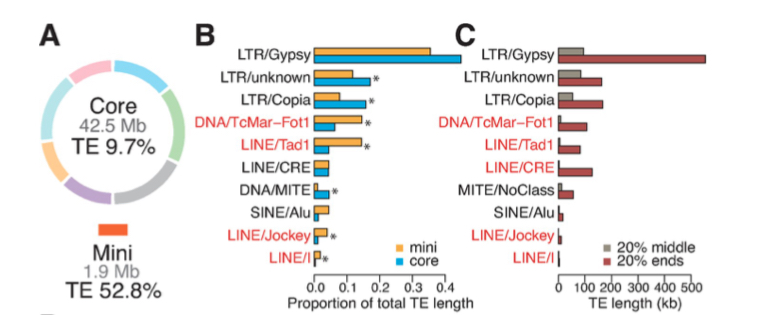
Effector gene reshuffling involves dispensable mini chromosomes in wheat blast fungus (PLOS Genetics)
The emerging disease wheat blast is devastating and has the capacity to cause 100% yield loss. Wheat blast is caused by the fungus Magnaporthe oryzae pathotype Triticum (MoT). This pathotype is distinct from most of the pathotypes that causes disease in other plants such as M. oryzae Oryza (MoO) in rice.…

